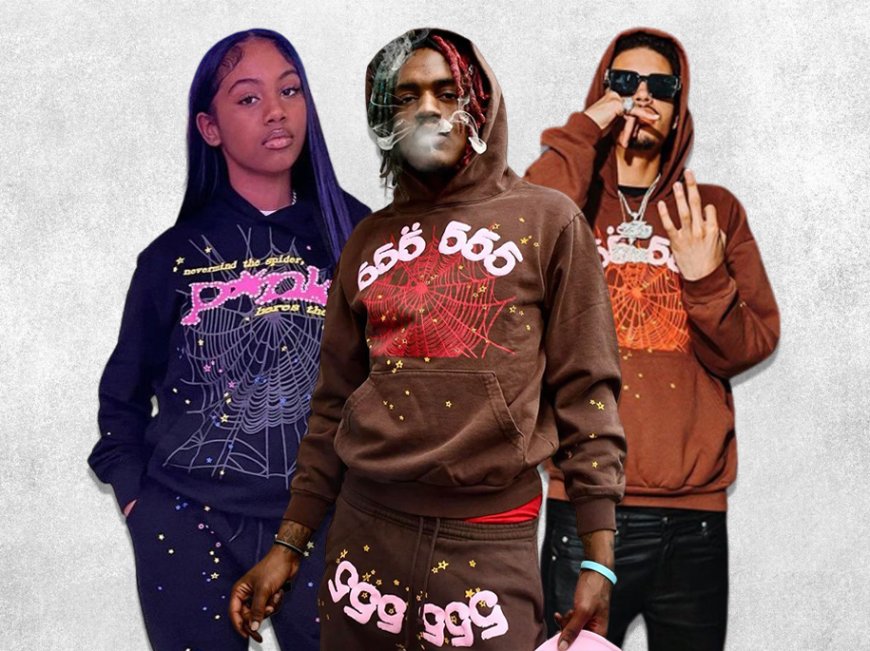Central to the ethos of slow fashion is the idea of mindful consumption.
Central to the ethos of slow fashion is the idea of mindful consumption.

In the fast-paced world of fashion, where trends come and go at lightning speed, a movement towards a more conscious approach has been steadily gaining momentum. Central to this movement is the ethos of slow fashion, which emphasizes mindful consumption over mass production and rapid turnover. In this article, we delve into the core principles of slow fashion and explore how embracing this philosophy can not only revolutionize the way we dress but also contribute to a more sustainable future. Visit now Sp5der hoodie
What is Slow Fashion?
Slow fashion is a response to the unsustainable practices of fast fashion, which prioritize cheap, disposable clothing produced at breakneck speeds. In contrast, slow fashion advocates for a more thoughtful and deliberate approach to clothing production and consumption. It emphasizes quality over quantity, craftsmanship over mass production, and sustainability over short-term trends.
The Principles of Slow Fashion
At the heart of slow fashion are several key principles:
-
Quality: Slow fashion prioritizes well-made garments that are designed to last. By investing in high-quality pieces, consumers can reduce their overall consumption and minimize waste.
-
Ethical Production: Unlike fast fashion, which often relies on exploitative labor practices and environmentally harmful manufacturing processes, slow fashion places a strong emphasis on ethical production. This includes fair wages, safe working conditions, and environmentally friendly practices.
-
Sustainability: Slow fashion aims to minimize its environmental footprint by using eco-friendly materials, reducing waste, and embracing sustainable production methods. This includes recycling, upcycling, and reducing reliance on harmful chemicals.
-
Transparency: Slow fashion brands prioritize transparency and accountability, providing consumers with information about their supply chains, production processes, and environmental impact. This allows consumers to make informed choices and support brands that align with their values.
Embracing Mindful Consumption
The Importance of Mindful Consumption
At the core of slow fashion is the concept of mindful consumption. This involves being more conscious of our purchasing decisions, considering the impact of our choices on the environment, society, and ourselves. By adopting a more mindful approach to fashion, consumers can cultivate a deeper appreciation for the clothes they wear and the people who make them.
How to Practice Mindful Consumption
Practicing mindful consumption involves several key principles:
-
Investment in Quality: Instead of chasing fleeting trends, focus on building a timeless wardrobe composed of high-quality, versatile pieces that will stand the test of time.
-
Considered Purchases: Before making a purchase, take the time to consider whether you truly need the item and how it aligns with your personal style and values. Avoid impulse buys and opt for pieces that bring joy and meaning to your life.
-
Support Ethical Brands: Choose to support brands that prioritize ethical production practices, transparency, and sustainability. Look for certifications such as Fair Trade, GOTS (Global Organic Textile Standard), and B Corp.
-
Care and Maintenance: Extend the lifespan of your garments by caring for them properly. Follow care instructions, mend any damages, and consider repairing or upcycling old pieces rather than discarding them.
The Impact of Slow Fashion
Environmental Benefits
Slow fashion offers numerous environmental benefits, including: Check it now https://spiderofficial.us/sp5der-hoodie/
- Reduction of waste: By investing in high-quality, durable garments and reducing overall consumption, slow fashion helps minimize textile waste.
- Conservation of resources: Sustainable production methods and materials reduce the environmental impact of clothing production, conserving water, energy, and natural resources.
- Mitigation of pollution: By embracing eco-friendly practices, slow fashion reduces pollution from harmful chemicals and textile dyes, protecting ecosystems and human health.
Social and Economic Impacts
Slow fashion also has positive social and economic impacts, including:
- Empowerment of artisans: By supporting ethical brands and fair trade practices, slow fashion creates opportunities for artisans and workers in developing countries, empowering them to earn fair wages and improve their livelihoods.
- Strengthening communities: Localized production and artisanal craftsmanship foster stronger communities and preserve traditional skills and techniques.
- Encouraging conscious consumerism: Slow fashion encourages consumers to be more mindful of their purchasing habits, fostering a culture of conscious consumerism that values quality, ethics, and sustainability.
Conclusion: Embracing a Mindful Approach to Fashion
Central to the ethos of slow fashion is the idea of mindful consumption. By embracing this philosophy and making more conscious choices about what we wear and how we shop, we can not only elevate our personal style but also contribute to a more sustainable and equitable fashion industry. Whether it's investing in quality pieces, supporting ethical brands, or practicing care and maintenance, every small step towards slow fashion helps pave the way for a brighter, more sustainable future.

 pogoji
pogoji 





